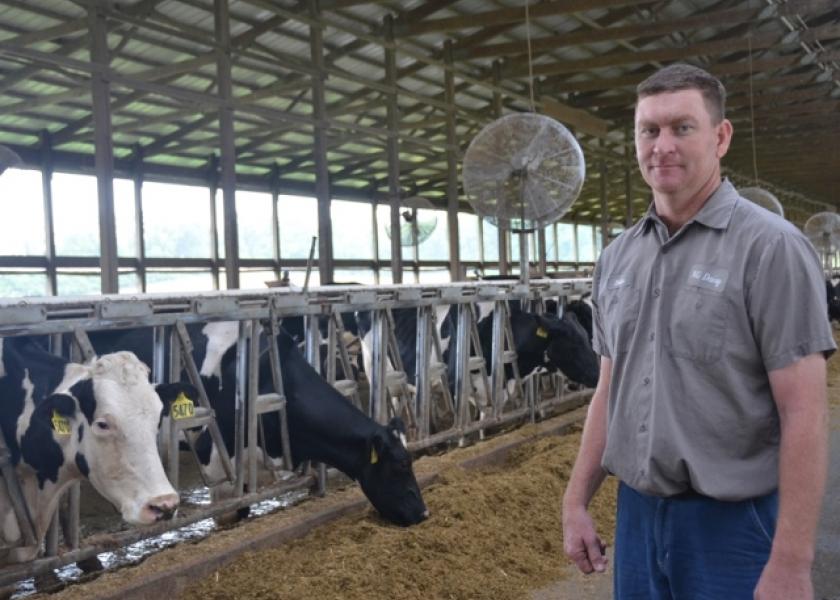4th Generation to New Generation

Going from milking 80 cows to 1,200 has been a fulfilling experience, with quite a bit of wisdom picked up along the way for Indiana dairy farmer Brian Rexing.
Rexing is a fourth-generation farmer and grew up on his family’s dairy and row-crop farm located just a few miles away from what is now New Generation Dairy near Owensville. The plan was for Rexing and his older brother to farm separately when the time was right.
“Luckily my dad got me into buying land as soon as I graduated high school. I bought my first farm about a week out of high school,” Rexing says of getting started in farming in 1991.
The ball kept rolling and Rexing began adding to his land base in an area where grain production reigns supreme and not many livestock operations can be found. The nearest dairy comparable in size is 60 miles away.
In 2006, Rexing was participating in Dairy Farmers of America’s Young Cooperator and Emerging Leader program and began exploring the idea of venturing out from the family dairy. He looked at facilities in Michigan, Illinois and Kentucky to determine what farm design would work best for him.
“When you’re starting out from scratch, there are a whole lot of things to wrap your head around,” Rexing says.
Land was purchased that worked logistically for a dairy with access to water, electricity and the Interstate highway. The sandy soil profile was also a nice fit for raising livestock. New Generation Dairy began construction in February of 2008 and milking cows on July 29, 2008.
“I grew up milking 60 to 80 cows on the home farm. On the first night [at the new dairy], we milked 119 in 4.5 hours,” Rexing says.
Within a few months, the first calf heifers Rexing had bought were almost all calved and the dairy was milking 500 head. By the end of a full year, there were nearly 800 head being milked and then the dairy crunch in 2009 hit.
“Luckily I had everything in place and I was stable enough that we were going to expand in 2010,” Rexing says. Cattle prices sank, the construction crew wasn’t busy and it worked out better finically to do the expansion 10 months in advance.
A budget was initially set to buy springer heifers at $1,700 and fortunately the price dropped to $1,350. The previous plan had been to grow from within via home-raised genetics, but with those types of prices and the advantage of not waiting, Rexing couldn’t pass up the opportunity. “The only way I could get my cost per cow down was to expand. It was the only way I was going to make it work was to expand,” Rexing adds.
Rexing was optimistic the dairy market would bounce back, but he did have his worries when milk prices were $10-11 cwt. Prices were better in 2010 and 2011, and the built-up land base of owned and rented ground helped generate additional revenue.
Approximately 3,000 acres of owned and rented ground is farmed by New Generation Dairy. Some of that acreage is farmed in partnership by Rexing with his father and brother, while his brother still runs the home dairy.
Rexing didn’t go to college but he says he gained his education dealing with the dairy crash in 2009. “We had to squeeze everything out that we could squeeze.”
He now feels more prepared for that type of market situation and has bright hopes for what the future can bring.
Rexing and his wife Ranell have four children, ranging in age from 2 to 13. With the dairy and grain growing operation multiple siblings could come back and focus on their own interest.
“I’m thinking someday down the road, there will be an opportunity for the next generation,” Rexing says.







